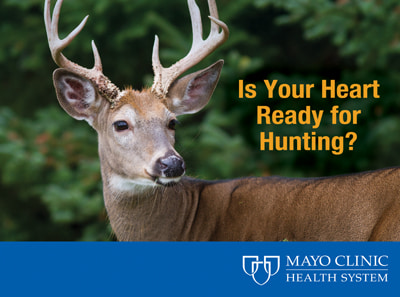Recent Posts
-

-
 Patient StoriesA lifesaver saved: An EMS veteran’s journey from rescue to recoveryNovember 14, 2025
Patient StoriesA lifesaver saved: An EMS veteran’s journey from rescue to recoveryNovember 14, 2025 -

Getting to the heart of the matter: Women and cardiovascular disease

Are you feeling chest pain? Tingling or numbness in your left shoulder? Nausea? You might be having a heart attack — but you might not realize it.
Double-edged sword
Nearly 1 million men and women die of cardiovascular disease each year in the U.S. Approximately half of those deaths are from heart attacks, while the rest are mostly from strokes and heart failure.
The good news? The number of deaths from cardiovascular disease is decreasing in both groups, according to Sharon Mulvagh, M.D., director of the Women's Heart Clinic and associate director of Preventive Cardiology at Mayo Clinic in Rochester, Minnesota. The bad news? More women than men are dying of cardiovascular disease and in higher numbers.
But Dr. Mulvagh says the worst news is that just over half of women realize that cardiovascular disease is their No. 1 killer, and even fewer young women know this.
The million-person question
"The death rate from heart attacks in women ages 35–54 has actually been increasing by 1.5% per year over the last decade," says Dr. Mulvagh.
Why are younger women dying from heart attacks more often? Dr. Mulvagh says the reasons can be narrowed down to a few important elements.
"Younger women have more risk factors for cardiovascular disease, and the factors seem to be more impactful for women," she says. "Women who smoke, have high triglycerides and/or have diabetes are two times more likely to develop cardiovascular disease than men. And the biggest thing driving women's risk is obesity."
A supersized problem
"Obesity in the U.S. has increased dramatically over the last few decades — about one-third of the population is normal weight, one-third is overweight and one-third is obese," says Dr. Mulvagh. "This environment we've lived in for 50 years, which influences people to be overweight or obese, is quite striking. We've supersized everything — soft drinks, food — and women appear to have been more affected than men."
Dr. Mulvagh says women, especially those approaching midlife, tend to develop a metabolic syndrome — sometimes called prediabetes — that increases heart disease risk if three of these five characteristics are present:
- High blood pressure
- Glucose intolerance (elevated fasting blood sugar)
- Elevated triglycerides
- Low HDL (high density) and high LDL (low density) cholesterol
- 35” or greater waistline for women (40” or greater for men)
"All of these factors are lifestyle-induced," says Dr. Mulvagh. "Cardiovascular disease is 80% preventable with an optimal heart-healthy lifestyle."
Family history plays an important role too. Dr. Mulvagh says if you have an immediate family member or relative who has had a heart attack, it's even more important for you to lower your risk by living a heart-healthy lifestyle.
Unique symptoms
Although women share some symptoms of cardiovascular disease with men, they're often different.
"Nearly 60% of women having a heart attack experience classic chest pain symptoms," says Dr. Mulvagh. "But women tend to have more atypical symptoms than men."
For example, women tend to have shortness of breath more often. Some women only get pain in their shoulders and back, or experience profound fatigue. "Symptoms can be hard to figure out, especially if it's something new. It's very concerning. Listen to your body and get checked out," says Dr. Mulvagh.
Preventing the percentages
Dr. Mulvagh says you can help prevent cardiovascular disease by maintaining a healthy body weight and eating primarily vegetables, fruit and lean sources of protein while avoiding refined carbohydrates, including white sugar and starches. She recommends two brief sessions of strength training per week, at least 30 minutes of regular exercise most days of the week or 60 minutes if you're overweight or obese.
"I like how the science journalist Michael Pollan put it," says Dr. Mulvagh. "'Eat food. Not too much. Mostly plants.' And get active. For most people, this boils down to eating less and moving more — a simple formula to protect your heart."



